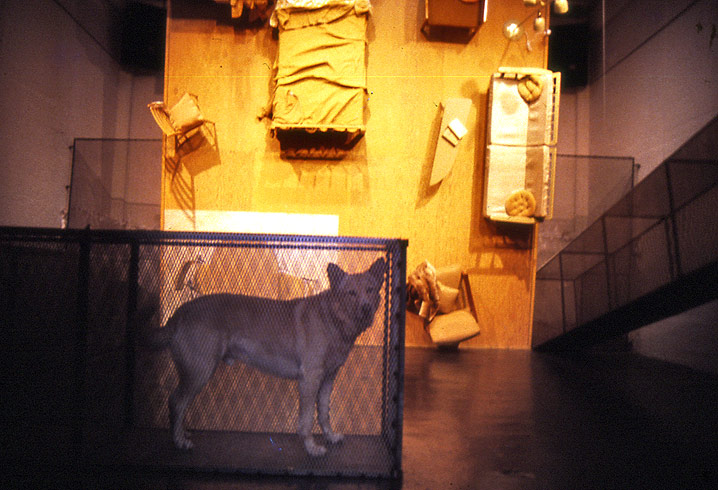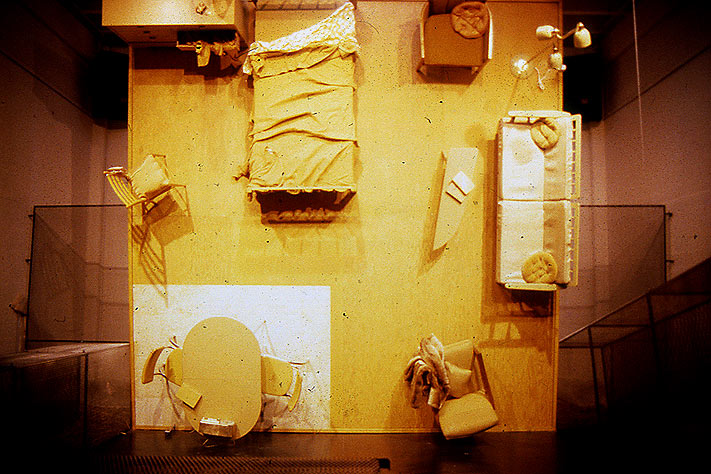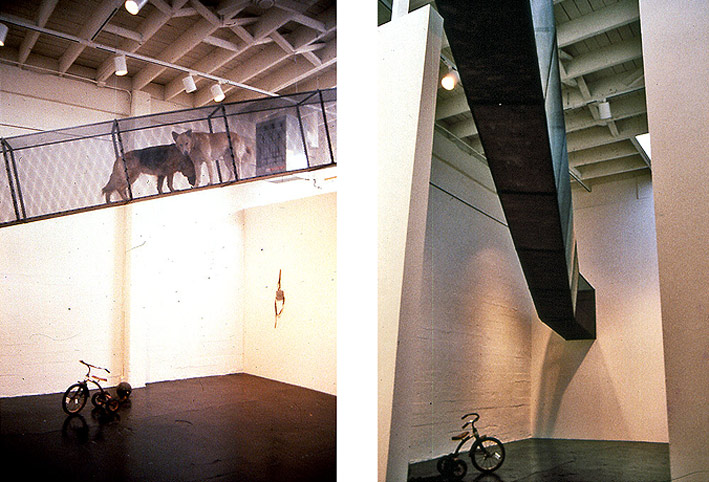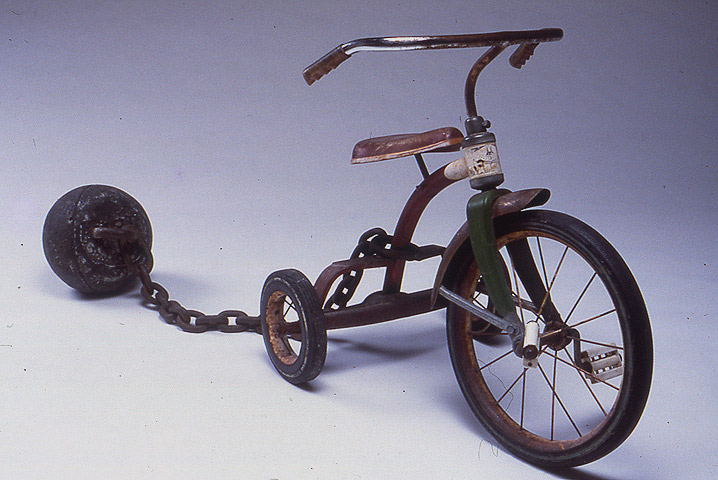WAYNE ZEBZDA: Ripoff
On the Nature of Security
March 22 – April 30, 1988
Artists often hold a mirror up to society, however warped it may be. They record, log and reinterpret their surroundings which continually inform their work. At the time I created Ripoff, I was living on the edge of skid row in San Francisco (one block from notorious 6th street.) My truck was broken into 13 times in 2 years; three of these break-ins were hotwired attempts to steal the entire vehicle. While drawing in the wee hours of the morning I would spot prowlers casing the vehicles. Ripoff was born in this environment.
More
Two installations were intertwined. One, titled “Nice Doggie, Nice Doggie” was composed of 90 feet of welded cage tunnels which were inhabited by two trained guard dogs named Bruiser and Contessa. They came home with me every night and would clock in the next day when the gallery opened. The cage tunnels flanked “Set for Life,” a tilted floor plan laid out with golden furniture and objects which would make up a persons’ dwelling: bedroom, kitchen, living room. This was not a precious glimmering gold color but more of a 70’s appliance gold. A door way entered this area and when viewed from a distance the gold color would lure you in. The dogs would get rather protective and bark at ‘intruders’. The cage tunnels allowed the dogs access to the outer room where they could bark-escort you out of the gallery.
There were various sculptures in the outer room: Tricycle for Bad Boys, which was pretty self-explanatory, Heart Protector (supposed to be love proof…not), Have a Nice Day was a happy face made up of terrorist ski masks, Safe Painting was a real safe and had a dial which twisted the Mona Lisa’s smile. I wondered what would be so valuable to merit hiding it behind this famous painting. The Kennedy Papers was JFK on a pack of zigzag rolling papers: it brought up all kinds of connotations I won’t go into. Skewered heads and a kids’ rabbit trap were more primitive works in this low tech security exhibition, as well as a 1950’s photo of a guard locking up the border of the United States: much of this is sadly still going on today with our diminishing legal and privacy rights i.e. the Patriot Act and Mexican border control issues rooted in our lives here in America not to mention what is going on in the rest of the world. “Hey, how high can we build that fence?”
When I first thought of this exhibition the primary underlying question was, “How much security can you have before you become a prisoner in your own system?” I feel this becomes even more relevant each day.
Wayne Zebzda
- Copyright © 2024. All Rights Reserved





